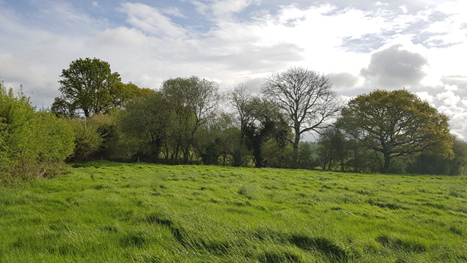Two major challenges over the coming decades are food security and biodiversity loss. Both are intrinsically linked to the health of wild and cultivated plants and each is exacerbated by the frequency and nature of extreme weather patterns, emergence of new pandemics and regional instability.
Our research is focused on developing and testing epidemiological frameworks and models to improve the prediction and to mitigate the risks from outbreaks of pests and pathogens, within changing agricultural and natural landscapes. Our models are used to analyse large-scale pandemics and to develop optimal strategies for pest and disease management. Our approach includes a synthesis of epidemiological theory, population and evolutionary genetics, landscape ecology, economic modelling and Bayesian statistical methods to estimate parameters.
Optimising disease control strategies
We use a range of mathematical, statistical and computational techniques to predict the spread of disease at scales ranging from the field, landscape, country-wide and continental scales. The models provide guidance for management practices, determining factors such as the critical crop densities and arrangements that are required to limit invasion by virulent pathogens, while accounting for different modes of introduction. Our models are underpinned by the hypothesis that effective control involves matching the scale of control with the inherent temporal and spatial scales of the epidemic. Current applications of the models in protecting agricultural crops include pathogens, disease vectors and pests in wheat, cassava, banana and citrus.
Estimation of epidemiological parameters
One of the principal challenges in dealing with emerging epidemics is to estimate parameters for dispersal and transmission soon enough to use them to inform models that are then used to compare the effectiveness of different control strategies before it is too late to act. We use advanced statistical methods to infer critical epidemiological parameters from successive snapshots of disease while allowing for uncertainties in disease reporting.
We use mathematical modelling applications to understand the level of external threats to native biodiversity, highlighting risk of developing epidemics in iconic species in forest, semi-natural and urban landscapes. Using data available through international partnerships we have developed suitability models to demonstrate the dynamics and distribution ranges of a range of invasive tree pests and pathogens that include sudden oak death, ash dieback and oak processionary moth.
Impact and Engagement
Two major challenges over the coming decades are food security and biodiversity loss; Both are intrinsically linked to the health of wild and cultivated plants and each is exacerbated by the frequency and nature of extreme weather patterns, emergence of new pandemics and regional instability.
Our models have been used to inform policy on emerging pest and pathogen threats by government departments in the UK, United States and Australia.
Early Warning Systems: Our group is a member of an international partnership that develops and implements crop disease early warning surveillance systems and cross-boundary coordination strategies to monitor and mitigate for yield losses at landscape scale.
We work to identify the most effective ways to summarise and deliver these results to government agencies and extension workers who in turn, inform farmers and landowners of pest and disease risk through an established network of communication channels in-country. Through this work, we deliver a real-time advisory service directly to subsistence farmers in sub-Saharan Africa and Southern Asia.
More information
To find out more about the research carried out by the Epidemiology and Modelling Research Group, visit Gilligan Lab website
Key publications





